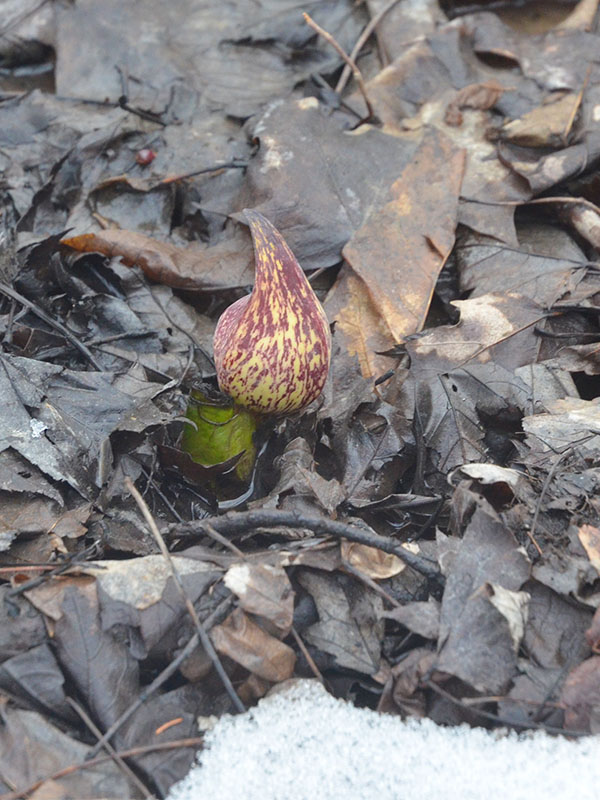
Weeds > Symplocarpus > Symplocarpus foetidus > Symplocarpus foetidus
Symplocarpus foetidus
Skunk Cabbage
| Family |
| Araceae |
| Genus |
| Symplocarpus |
| Species |
| foetidus |
| Category |
| Weeds |
| USDA Hardiness Zone |
| 3 - 7 |
| Canadian Hardiness Zone |
| 1a - 6b |
| RHS Hardiness Zone |
| H6 - H7 |
| Temperature (°C) |
| -40 - (-15) |
| Temperature (°F) |
| -40 - 5 |
| Height |
| 0.5 - 1 m |
| Spread |
| 0.5 - 1 m |
Photographs
Description and Growing Information
Flowering Period
| General Description |
| The common name Skunk Cabbage is a reference to the skunk-like smell produced if the leaves are crushed or broken open by stepping on them. The plant, if it has not been damaged, has no unpleasant odour. |
| Landscape |
| Groundcover, borders, in informal gardens or as a specimen. |
| Cultivation |
| Grow in moist, well-draining to loosely-draining, humus-rich and neutral to slightly acidic soil. |
| Shape |
| Clumping and widely mat-forming. |
| Growth |
| Fast |
| Pests |
| Powdery mildew. |
| Habitat |
| Eastern North America and northeastern Asia. |
| Leaf Description |
| Large broad leaves 40 - 55 cm long and 30 - 40 cm wide. |
| Flower Description |
| The flowers, mottled purple in colour, are produced on a 5 - 10 cm long spadix contained within a spathe that is 10 - 15 cm tall. |
| Notable Specimens |
| Joany's Woods, West Williams, Middlesex County, Ontario, Canada. |
| Propagation |
| Division of plantings. |
